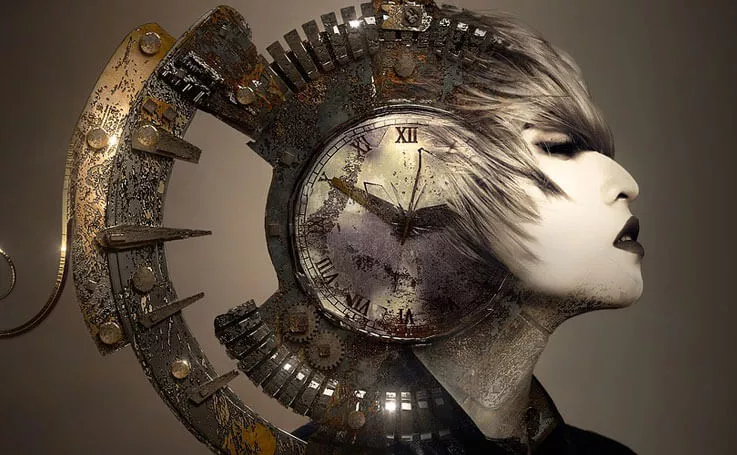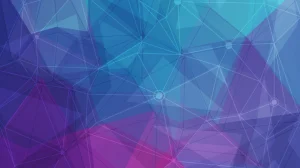Main characteristics
Graphics (German: Graphik, Greek: graphikos “written”) is a type of visual art characterized by the predominance of lines and strokes, the use of black and white contrasts, and the use of color to a lesser extent than in painting. Works can have both monochrome and polychrome gamut.
Graphics are divided into the following types:
- machine tool
- bookish
- poster
- applicable
- architectural
- computer room
History of graphics
Graphics is a type of art, the name of which comes from the Greek word, which translates as “I write, scratch, draw.” Graphics can be considered the basis of all visual arts. After all, the main means of creating an artistic image in graphics is the simplest way for a person to reproduce what he sees – a line, a stroke that creates the outline of an object or figure.
Among them, the drawing is the oldest type of graphics, from which the birth of fine art begins. Drawing is still the most traditional type of graphics. The origins of the pattern can be found in Neolithic rock painting, ancient vase painting, and medieval miniatures. Wet sand, flat stones, and wet clay served as the basis for the drawing. Over time, the drawings were transferred to ceramic products and fabrics. In Ancient Greece, the main expressive qualities of graphics were lines and silhouettes (antique black-figure vase painting, red-figure vase painting). Since the Renaissance, drawing has acquired an independent meaning in the form of sketches, album sketches, and sketches, which are performed using many tools: pencil, charcoal, chalk, sangina, pen, brushes, and various types of ink, ink, and watercolor.
The complexity of graphics went along with the invention of new paints – watercolors, gouache, pastels, temperas. Although color plays a role in the use of these colors, as well as the possibility of using many colors, which is not inherent in the original graphics.
Over time, the means of printed graphics became more complicated – etching, lithography, linocut, etc. Another type of graphics is engraving or embossing (machine graphics). This is a type of graphics in which the image is a printed impression of a relief pattern made by an artist on one or another material. There are many types of engraving. These are engravings on wood and linoleum (xylography and linocut), engraving on metal, dotted manner, soft varnish, dry needle, etching, lithography. At the same time, the high artistic value of masterfully executed drawings was not lost. This was proven by precious drawings of geniuses from the Italian Renaissance and Baroque to modern masters (drawings by Leonardo da Vinci, Botticelli, Raphael, Michelangelo, Bosch and Grunewald, Rembrandt, architect Bazhenov, Edouard Manet, Rodin, Pavel Korin, Dmytro Zhilinsky, Kyiv graphic artist Serhii Kononchuk) .

Computer Graphics
Computer graphics are graphics, that is, images that are created, transformed, digitized, processed and displayed by means of computer technology, including hardware and software.
Moving computer graphics are called computer video or computer animation.
A monitor, printer, plotter, etc. are used to display graphics.
Working with computer graphics is one of the most popular areas of using a personal computer, and not only professional artists and designers perform this work. At any enterprises, sometimes there is a need to submit advertisements in newspapers and magazines or simply to issue an advertising leaflet or booklet.
No modern multimedia program can do without computer graphics. Work on graphics accounts for up to 90% of the working time of programming teams that produce programs for mass use.
There are 3 types of computer graphics. These are raster graphics, vector graphics and fractal graphics. They differ in the principles of image formation when displayed on a monitor screen or when printed on paper.
Raster graphics are used in the development of electronic (multimedia) and printed publications. Illustrations made by means of raster graphics are rarely created by hand using computer programs. Scanned illustrations prepared by the artist on paper or photographs are used more often for this purpose. Recently, digital photo and video cameras are widely used to enter bitmap images into a computer.
Most graphics editors designed for working with bitmap illustrations are focused more on processing than image creation. On the Internet so far only raster illustrations are used.
Software tools for working with vector graphics are primarily intended for creating illustrations and less for their processing. Such tools are widely used in advertising agencies, design bureaus, editorial offices and publications. Design works with the use of fonts and simple geometric elements are solved much easier by means of vector graphics. There are examples of highly artistic works created by means of vector graphics, but they are more the exception than the rule, since the artistic preparation of illustrations by means of vector graphics is extremely difficult.
Software tools for working with fractal graphics are designed for automatic image generation through mathematical calculations. Creating a fractal art composition is not about drawing or design, but about programming. Fractal graphics are rarely used to create printed or electronic documents, but are often used in entertainment applications.
History of computer graphics
The first computing machines did not have separate tools for working with graphics, but were used to receive and process images. By programming the memory of the first electronic machines, built on the basis of a matrix of lamps, it was possible to obtain patterns.
In 1961, programmer S. Russell led a project to create the first computer game with graphics. The creation of the game (“Spacewar!”) took approximately 200 man-hours. The game was created on a PDP-1 machine.
In 1963, the American scientist Ivan Sutherland created the Sketchpad software and hardware complex, which allowed to draw dots, lines and circles on the tube with a digital pen. Basic actions with primitives were supported: moving, copying, etc. In fact, it was the first vector editor implemented on a computer. Also, the program can be called the first graphical interface, and it was such even before the appearance of the term itself.
In the mid-1960s, developments in industrial applications of computer graphics appeared. So, under the leadership of T. Moffett and N. Taylor, the Itek company developed a digital electronic drawing machine. In 1964, General Motors introduced the DAC-1 automated design system, developed jointly with IBM.
In 1964, a group led by N.N. Konstantinov created a computer mathematical model of the movement of a cat. The BESM-4 machine, executing the written program for solving differential equations, drew the cartoon “Kishechka”, which was a breakthrough for its time. An alphanumeric printer was used for visualization.
In 1968, computer graphics experienced significant progress with the emergence of the ability to store images and display them on a computer display, an electron beam tube.

Main areas of application
Scientific graphics — the first computers were used only to solve scientific and industrial tasks. In order to better understand the obtained results, they were graphically processed, graphs, diagrams, and drawings of calculated structures were built. The first graphs on the machine were obtained in character printing mode. Then special devices appeared – plotters (plotters) for creating drawings and graphs with an ink pen on paper. Modern scientific computer graphics make it possible to conduct computational experiments with a visual presentation of their results.
Business graphics is a field of computer graphics designed for visual presentation of various performance indicators of institutions. Planned indicators, reporting documentation, statistical summaries — illustrative materials are created for such objects with the help of business graphics. Software tools for business graphics are included in the composition of electronic spreadsheets.
Design graphics are used in the work of engineers — designers, architects, inventors of new technology. This type of computer graphics is a mandatory element of CAD (design automation systems). Design graphics tools can be used to obtain both flat images (projections, cross-sections) and spatial three-dimensional images.
Illustrative graphics is arbitrary drawing and drawing on the computer screen. Graphics packages are general purpose application software. The simplest software tools for illustrative graphics are called graphic editors.
Art and advertising graphics – which became popular in many ways thanks to television. With the help of a computer, commercials, cartoons, computer games, video lessons, video presentations are created. Graphic packages for these purposes require large computer resources in terms of speed and memory. A distinctive feature of these graphics packages is the ability to create realistic images and “moving pictures”. Obtaining drawings of three-dimensional objects, their rotations, approximations, deletions, deformations is associated with a large amount of calculations. Transmission of the illumination of the object depending on the position
light sources, from the location of shadows, from the texture of the surface, requires calculations that take into account the laws of optics.
Computer animation is the production of moving images on a display screen. The artist creates on the screen drawings of the initial and final position of moving objects, all intermediate states are calculated and depicted by the computer, performing calculations based on the mathematical description of this type of movement. The resulting drawings, displayed sequentially on the screen with a certain frequency, create the illusion of movement.
Multimedia is a combination of a high-quality image on a computer screen with sound. Multimedia systems are most widely used in the field of education, advertising, and entertainment.
